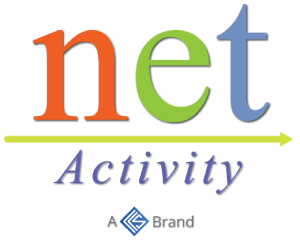Innovation Is Changing Entire Aspects of Business
The search for the right technology for your business sometimes becomes problematic because you either don’t have the necessary capital or operational leeway to integrate the latest and greatest solutions. For the company that needs an upgrade, and doesn’t exactly know what the next move is, consulting with an IT professional is a great option, and can turn your entire business around.
At Net Activity, we deal in business-class technology every day, and the resulting knowledge allows our consultants to pinpoint when a technology solution is a good fit, and when it should be avoided altogether. After all, while every business needs technology that provides solid ROI, no business needs technology that they can’t properly utilize. Today, we look at two parts of your business’ computing where you could make significant technology upgrades that would provide rapid ROI, and typically won’t ruin your annual technology budget.
Communications
We’ll start with communications, because it is a core aspect of the modern business that has seen some pretty stark shifts. For decades the telephone was the number one (and only) solution for company communications. You had a desk, you sat at the desk, and answered the phone when it rang. Obviously, today things are much, much different. They are so different that sometimes you’ll be standing on line in a store and you think someone is talking to you, but he/she is actually negotiating a sale with someone two time zones away via Bluetooth headset.
Today’s business communications solutions are considerably better, and often more cost effective than communications in the past. There are a lot more of them too. With the advent of the smartphone and the cloud, more can get done on the move than ever before. Here are two of the communications solutions that are available to the modern business:
- Voice over Internet Protocol: Every business needs a telephone system, and often business phone solutions from the telephone company can be exceedingly expensive. Today there is Voice over Internet Protocol (VoIP) that uses your organization’s Internet bandwidth to provide in-office and mobile options for businesses. Some VoIP solutions will come packaged with other services, but stand-alone fully-hosted VoIP solutions are a powerful and cost-effective option for any business because of the breadth of services that are available with a VoIP plan. Typically billed per user, per month, hosted VoIP can save you money and provide the mobility and options your business needs.
- Hosted Team Collaboration: Instant messaging and forums have been around as long as the Internet, but today there are full-featured team collaboration tools that combine the ease of use of IM with the comprehensive project collaboration found in today’s strongest email solutions. Options like Slack and Microsoft Teams can provide any business a heavily-integrated platform in which to communicate, collaborate, and cooperate, moving projects ahead faster than ever before; and, because it is hosted in the cloud, information can be accessed from any place that has an Internet connection on any allowed device.
File Storage
Any organization that relies on IT, has to store data. All the emails, documentation, presentations, marketing materials, databases, graphics, and media your organization has can chew up a huge chunk of storage space. That’s before you even take into account the amount of file storage space every application your organization utilizes. If you think about it, where and how you store your data is a major consideration.
So what innovative options are open to you? Well, as with any technology, you will want to first consider your needs in both storage needed and where you want to store it. It’s true that some of the data you have should be stored onsite, but it’s also true that today cloud storage options are faster, cheaper, and more reliable than ever. Here are two options you should consider when deciding what file storage situation is best for your business:
- Multi-Cloud Storage: It is undeniable that cloud storage has been a major benefit for business. Not only does it provide near-ubiquitous access to data, it can be set up on or off-site, as a cost-saving measure, or one that is extraordinarily secure. One problem that many organizations have with cloud computing is that they have to either give up management to the infrastructure that holds all their data, or they have to spend big on their own solution to control, and some of the data they have isn’t really worth the huge investment. With multi-cloud storage, it gives the organization freedom to assign storage (applications and processing) to whichever cloud server an organization deems appropriate. This provides the ability to enforce policies and standards across on-premise and hosted cloud environments, providing the agility and flexibility many organizations are looking for in their cloud storage solutions.
- Management as a Service: There is more data than ever, and the higher volumes of data there are, the more resources it takes to sort and manage it. Resources always cost money. As a result, you are quickly seeing management as a service (MaaS) platforms being launched. This service basically outsources your data storage management. Since companies are increasingly storing data in all types of environments, and they need to focus on turning a profit, companies are now offering in-cloud support, management analytics, and performance optimization to companies that just can’t keep up with the amount of data they are storing.
Innovating is important for any business, as new solutions can really make a difference at the bottom line. Before you sink money upgrading any portion of your organization’s information systems, contact the IT experts at Net Activity to do an assessment. Our knowledgeable technicians can find innovative technologies that are right for your business. For more information call us at 216-503-5150.




